Inventions
So, We Taste Like Bacon?
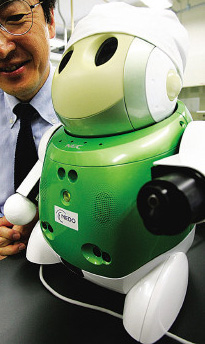
Ever wondered what human flesh would taste like but you've never been trapped in the Andes due to a horrific plane crash? Then this cute little robot has the answer. Designed by researchers in Japan, the Winebot is supposed to be for sorting different types of wine, cheese and hors d'oeuvres. But when a reporter placed his hand against the sensor, he was declared to be "bacon". Anyone care to confirm?
Posted By: Nethie - Mon May 04, 2009 -
Comments (7)
Category: Animals, Body, Cannibalism, Inventions, Robots
Water-Saving Shower Curtain
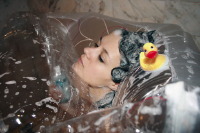 Here in Southern California we're facing water shortages, so Elisabeth Buecher's shower curtain could come in handy. It helps save water because it "slowly inflates around you while you shower. It leaves you only a few minutes to take your shower before trapping you."
Here in Southern California we're facing water shortages, so Elisabeth Buecher's shower curtain could come in handy. It helps save water because it "slowly inflates around you while you shower. It leaves you only a few minutes to take your shower before trapping you."She calls her overall philosophy of design the "design of threat and punishment." Sounds kinky.
I have to admit that the idea of installing her shower curtain in the guest bathroom of our house, and not warning guests about it beforehand, is very tempting.
(Warning: One of the images on her page may be slightly NSFW.)
Posted By: Alex - Thu Apr 23, 2009 -
Comments (11)
Category: Bathrooms, Hygiene, Inventions
The Bicycle Shower
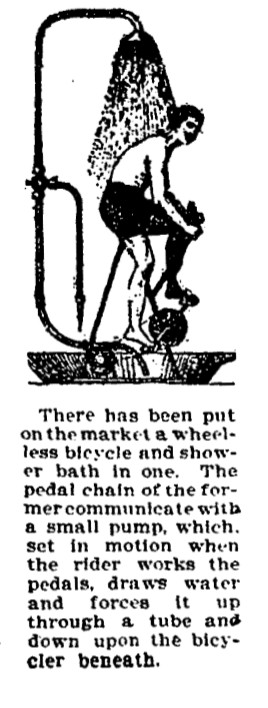
Combining your workout with a shower could save some time, I suppose. Though I'm not sure if that was the intended purpose of this invention. From the Chicago Tribune, Jan 18, 1903.
Posted By: Alex - Tue Apr 21, 2009 -
Comments (14)
Category: Bathrooms, Exercise and Fitness, Hygiene, Inventions, 1900s
Transparent Face Mask
From Popular Science, March 1940: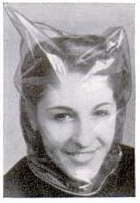
Maybe it didn't interfere with vision, but the interfering with breathing probably posed a problem.
Posted By: Alex - Thu Apr 16, 2009 -
Comments (6)
Category: Inventions, Products, 1940s
Build your own hug machine
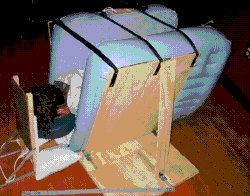 Hugmachine.org offers complete instructions on how to build your very own, low-cost hug machine. For those times when you need to feel the comforting press of two mattresses around you.
Hugmachine.org offers complete instructions on how to build your very own, low-cost hug machine. For those times when you need to feel the comforting press of two mattresses around you.The Hug Machine was invented by Temple Grandin as a way to treat her autism. From Wikipedia:
Posted By: Alex - Fri Apr 03, 2009 -
Comments (7)
Category: Inventions, Psychology
Sloped Writing
It's not a bad idea, though it has no chance of ever becoming widely adopted. Inventor Paolo Bizziocchi proposes that it would be easier to read text if it were sloped downhill from left to right, so that each new line would be at the same height as the line just finished. This would allow "a quick-reading without mistakes and delays whatsoever."Bizziocchi filed a patent that includes this helpful illustration:
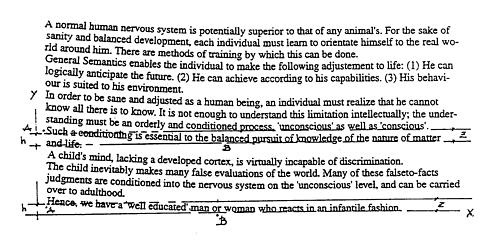
What I don't understand is how this was patentable. People have been writing with lines at all kinds of crazy angles ever since writing was invented.
Posted By: Alex - Fri Mar 20, 2009 -
Comments (7)
Category: Inventions, Patents
Sick Human Detector
A Belgian company has filed a patent for an invention designed to detect sick travelers in airports. They call it a device for the "RECOGNITION AND LOCALISATION OF PATHOLOGIC ANIMAL AND HUMAN SOUNDS."The idea is to place microphones around airports that will zero in on the sound of people coughing. The people hacking their lungs out can then be prevented from boarding a plane. A less controversial use of the technology is to detect sick pigs in pig pens.
Can people be stopped from traveling because they have a cold? I've never seen that done, but I'd like it (despite the inconvenience to the sick people) 'cause otherwise they infect everyone else on the plane. Though of course, if I were the one kicked off a plane I'd be seeing red. (via New Scientist)
Posted By: Alex - Tue Mar 17, 2009 -
Comments (10)
Category: Health, Disease, Inventions, Patents, Travel
Burp Gas Filterer
 The Burp Gas Filtering Device: Patent No. 7070638, issued July 4, 2006. It serves two functions in one. You can deodorize your burp, and if your dinner companion needs a pen to sign the check, you'll have one to offer.
The Burp Gas Filtering Device: Patent No. 7070638, issued July 4, 2006. It serves two functions in one. You can deodorize your burp, and if your dinner companion needs a pen to sign the check, you'll have one to offer. The burp filtering device has the body of a writing pen, with an intake port at the upper end of the body, a plurality of exhaust ports adjacent the writing tip and a filter disposed within the body. The filter may be made of activated charcoal or other media for filtering and adsorbing or absorbing eructation odors. In use, the user holds the upper end of the pny body to his lips, releases the suppressed burp and the filtered, deodorized gas is exhausted through the ports at the writing tip...
Still another object of the invention is to provide a device for eliminating burp odors that also serves as a writing instrument.
Posted By: Alex - Mon Mar 09, 2009 -
Comments (11)
Category: Hygiene, Inventions, Patents
The Horse Life Preserver
 Patent No. 1265580, issued May 1918:
Patent No. 1265580, issued May 1918:This invention relates to life preservers, and more especially it is intended for quick application to a draft horse, pack mule, or other animal which is carrying war supplies and which may possibly be a cavalry horse, so that when a stream or river is reached the animal can swim across with his load and possibly with his driver and the necessity for building a bridge is avoided.
Posted By: Alex - Wed Mar 04, 2009 -
Comments (10)
Category: Animals, Inventions, Patents
Happy Cheese Parings Day
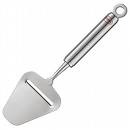 Let's take a moment to remember Thor Bjørklund, the Norwegian inventor of the cheese slicer. From Wikipedia:
Let's take a moment to remember Thor Bjørklund, the Norwegian inventor of the cheese slicer. From Wikipedia:And on this day, in 1925, he received a patent for the cheese slicer. According to blather.net, "27 February ever since has been celebrated as osteskorperdagen, 'cheese-parings day', the biggest holiday in the Norwegian calendar, when everyone gorges themselves on thin slices of cheese in the cold, icy streets."
Sounds to me like a good way to spend the day.
Posted By: Alex - Fri Feb 27, 2009 -
Comments (8)
Category: Food, Holidays, Inventions, Patents

| Who We Are |
|---|
| Alex Boese Alex is the creator and curator of the Museum of Hoaxes. He's also the author of various weird, non-fiction, science-themed books such as Elephants on Acid and Psychedelic Apes. Paul Di Filippo Paul has been paid to put weird ideas into fictional form for over thirty years, in his career as a noted science fiction writer. He has recently begun blogging on many curious topics with three fellow writers at The Inferior 4+1. Contact Us |




